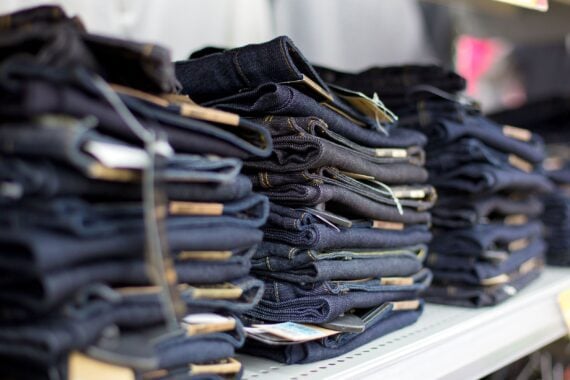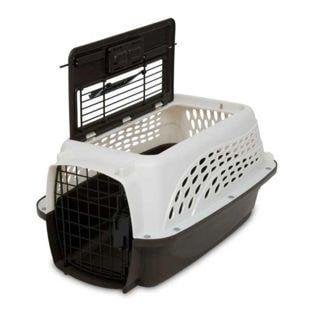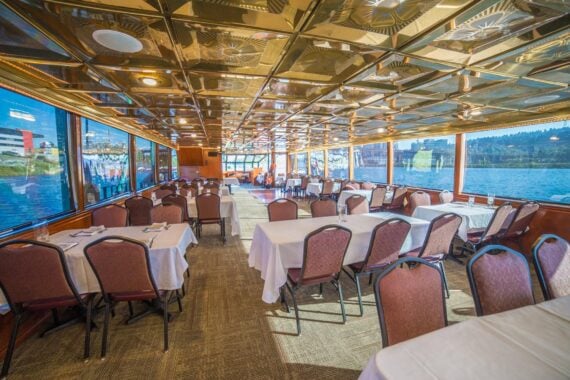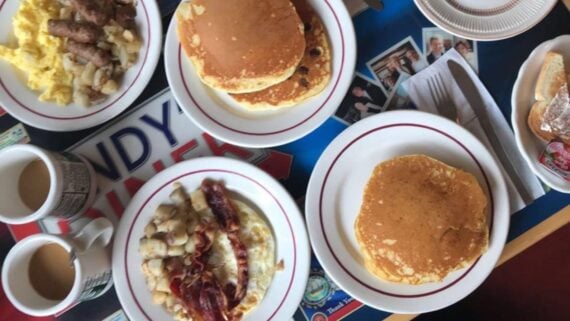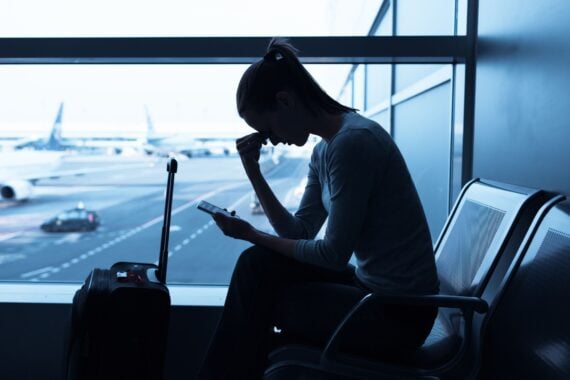Blue jeans have a long history in this country. Invented in the late 1800s, America introduced jeans to the world during World War II, and now people almost everywhere wear jeans. Today, one of the first truly American garments remains a booming business — the average American owns seven pairs of blue jeans, and approximately 450 million pairs of jeans are sold in the United States per year. Let’s take a look at how jeans progressed through the years to what they are today.
Related: 15 of the Most Expensive Clothing Items Ever Auctioned
The Man Behind the Name
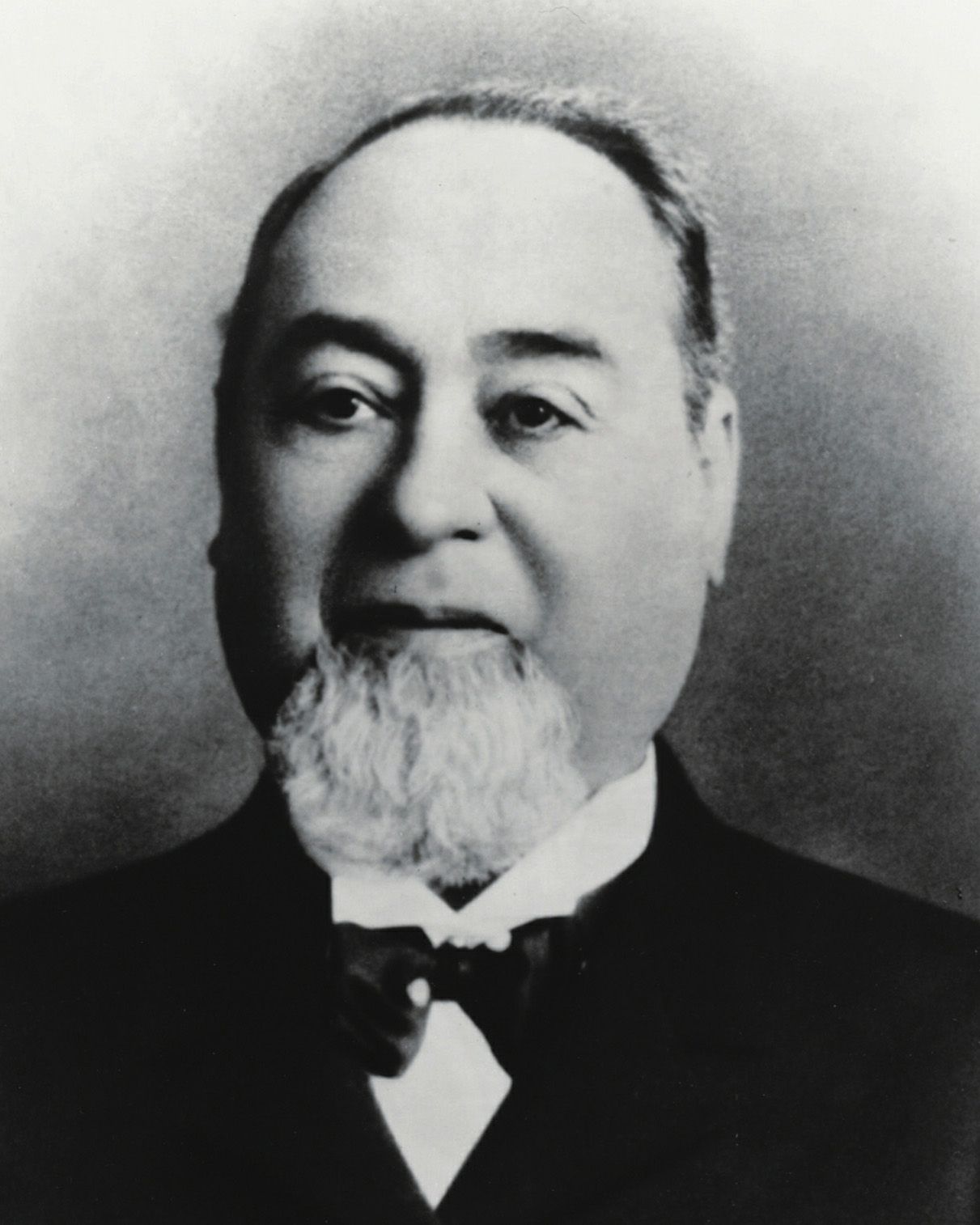
Related: 20 Free and Cheap Things to Do in San Francisco
Blue Jeans Are Born
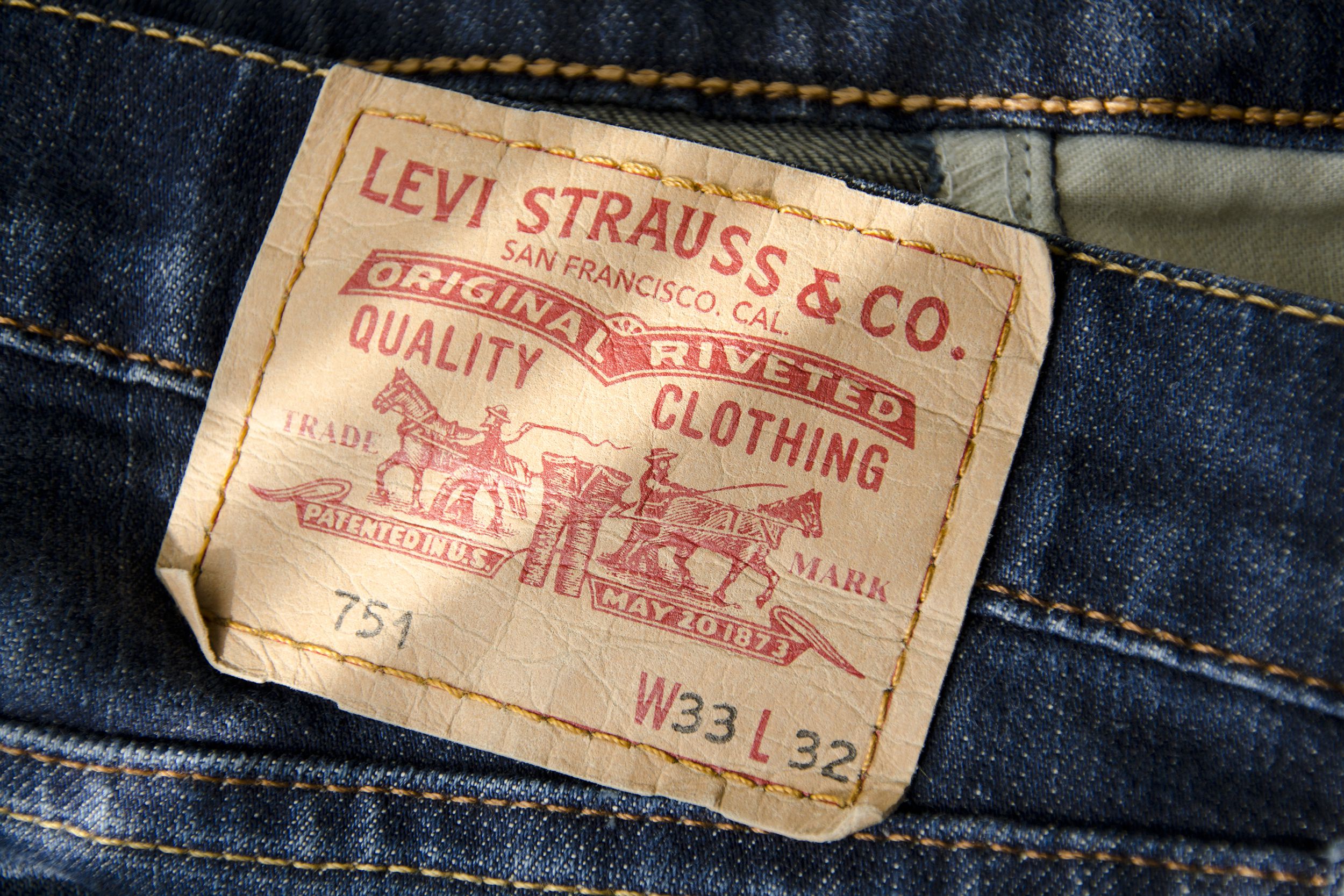
The official “birthday” for blue jeans is May 20, 1873. This was the day that Levi Strauss and a tailor named Jacob Davis received the patent for their process of reinforcing pants with rivets. According to a Levi’s company timeline, the original design has “one back pocket with the Arcuate stitching design (the same design they have today), a watch pocket, a cinch, suspender buttons and a rivet in the crotch. The rivets on the back pockets are exposed.”
For more fun stories like this, please sign up for our free newsletters.
A Lost History
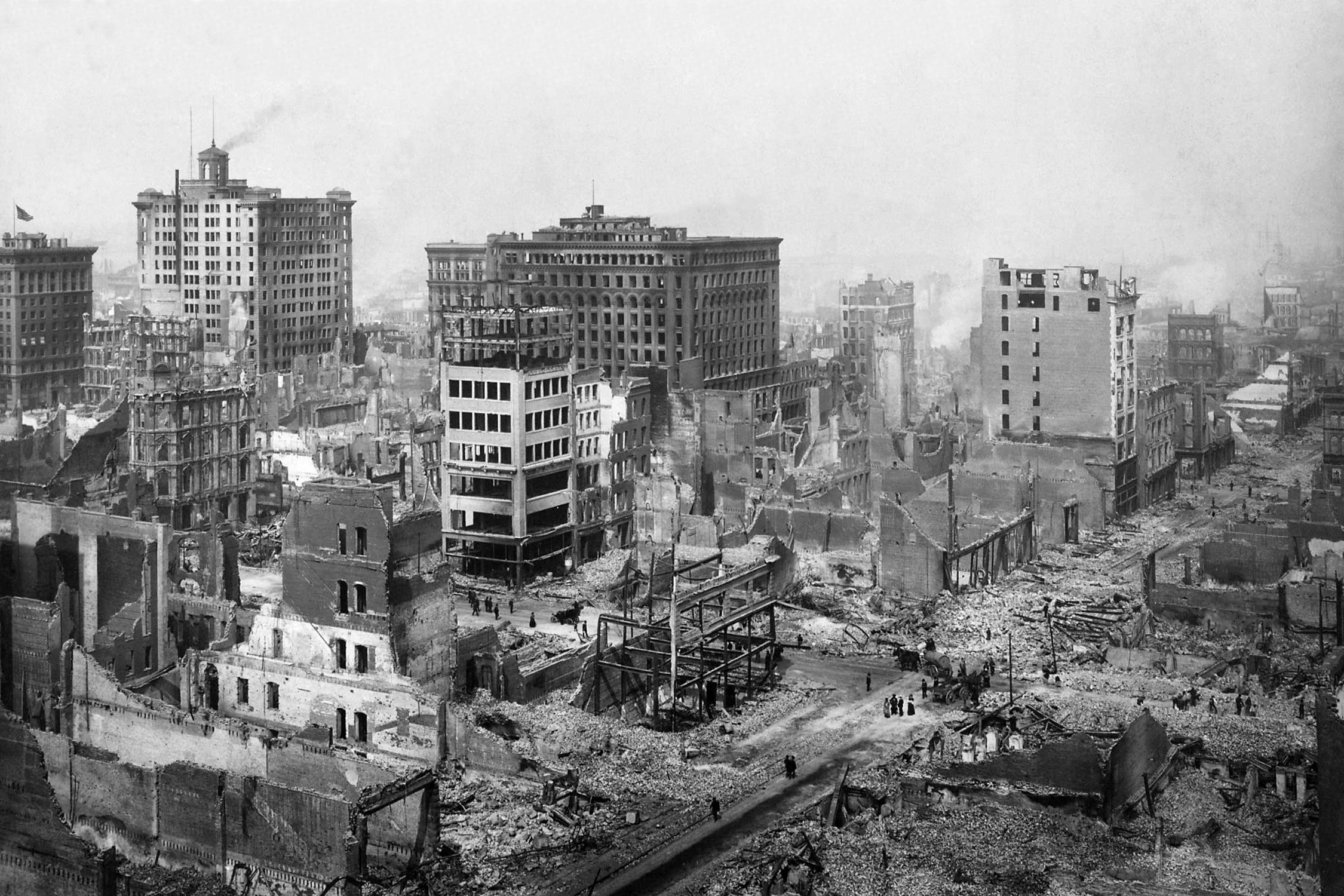
Strictly Denim
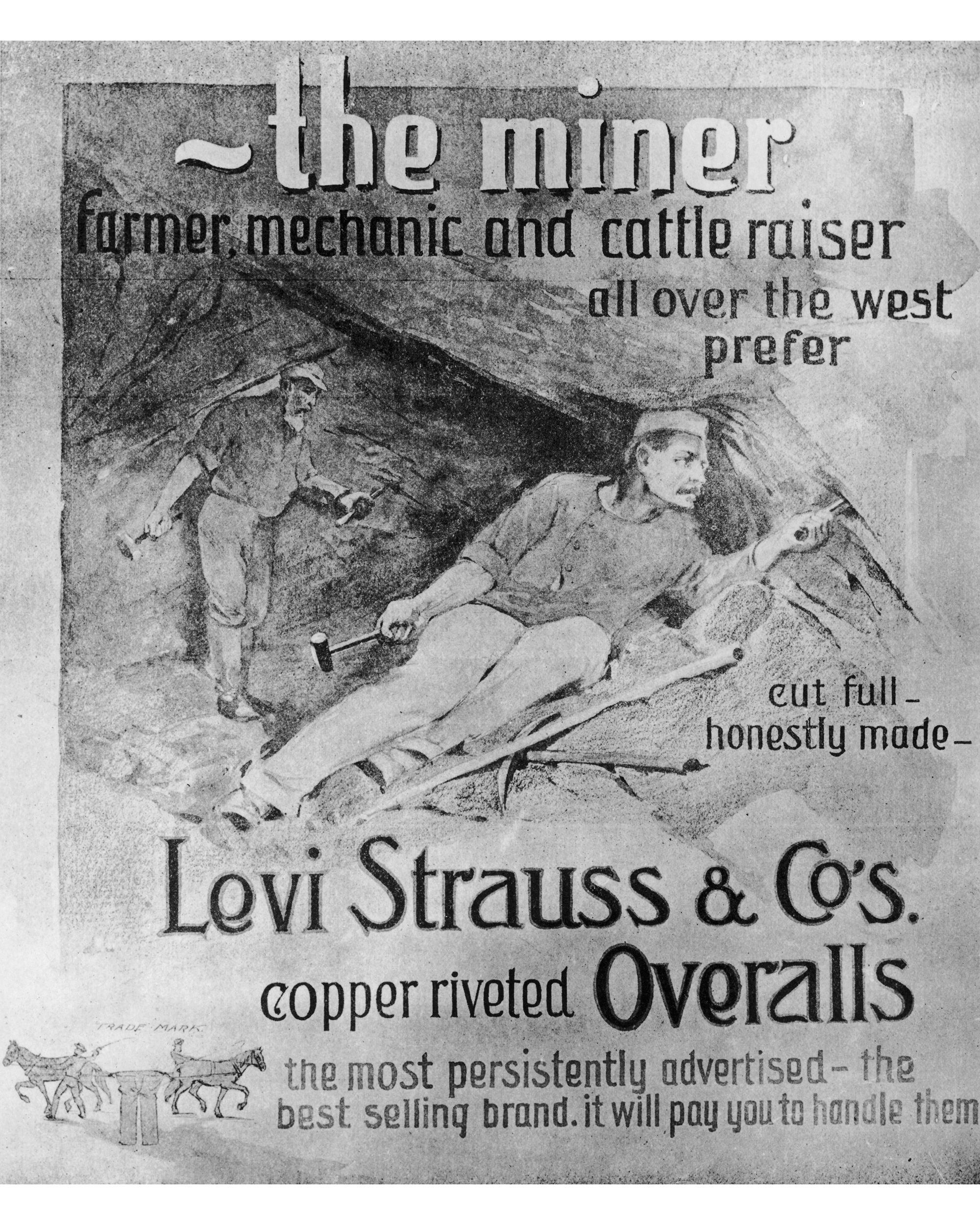
Levi Strauss passed away in 1902, and by 1911 the company was owned and operated by Strauss’s nephews, Jacob, Louis, Abraham, and Sigmund Stern. Due to customer demand, they stopped making blue jeans out of cotton duck and stuck strictly to denim, considering it a superior fabric that was strong, comfortable, and became more comfortable with each wash — ideal for manual labor workers in the mines and on the railroad. By 1920, Levi’s garments became so popular that the company opened a second factory in Frankfort, Indiana.
Related: Made in the USA: 33 Must-See Factory Tours
Jeans in the 1930s
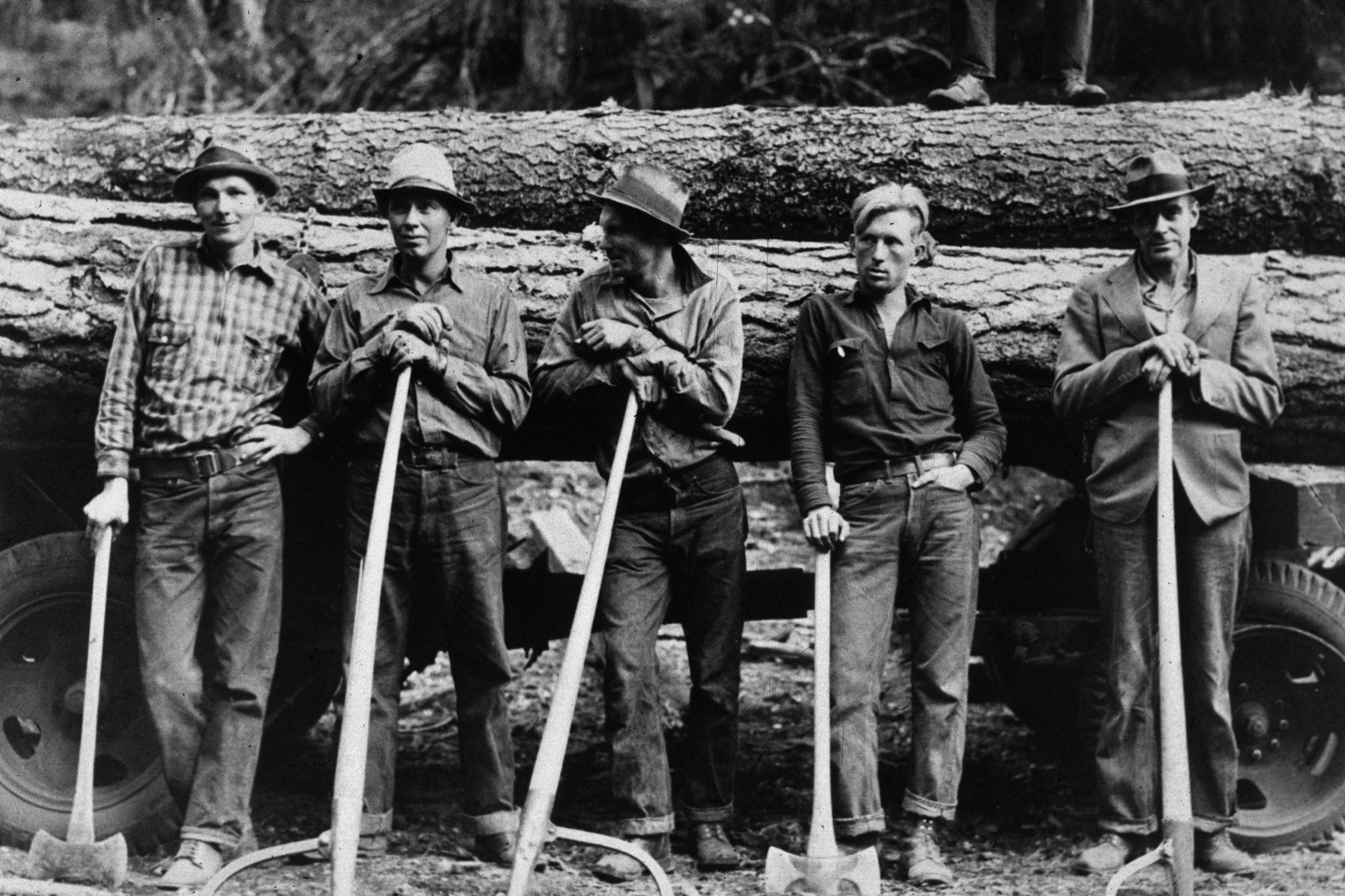
Enter John Wayne and the Western genre of movies. Combine America’s newfound Wild West fascination with the fact that many of the country’s workers still needed a rugged pant, and what started as practicality became a stylish trend. Now it wasn’t just manual laborers that needed a pair of blue jeans — the growing fascination with cowboys and dude ranches had everyone wanting the look.
Trending on Cheapism
Jeans in the 1950s

By mid-century, American soldiers had taken their blue jeans to war, which had people in other countries coveting the style, while civilians at home had begun wearing them for leisure activities. Marilyn Monroe helped lead the way for women to don blue jeans with her starring role in the 1952 movie “Clash by Night.” The style was still high-waisted work pants, but slightly slimmed down for women, and for men. Ultimate bad boy James Dean gave jeans a rebellious reputation in “Rebel Without a Cause” that soon had many young people wearing jeans.
Jeans in the 1960s
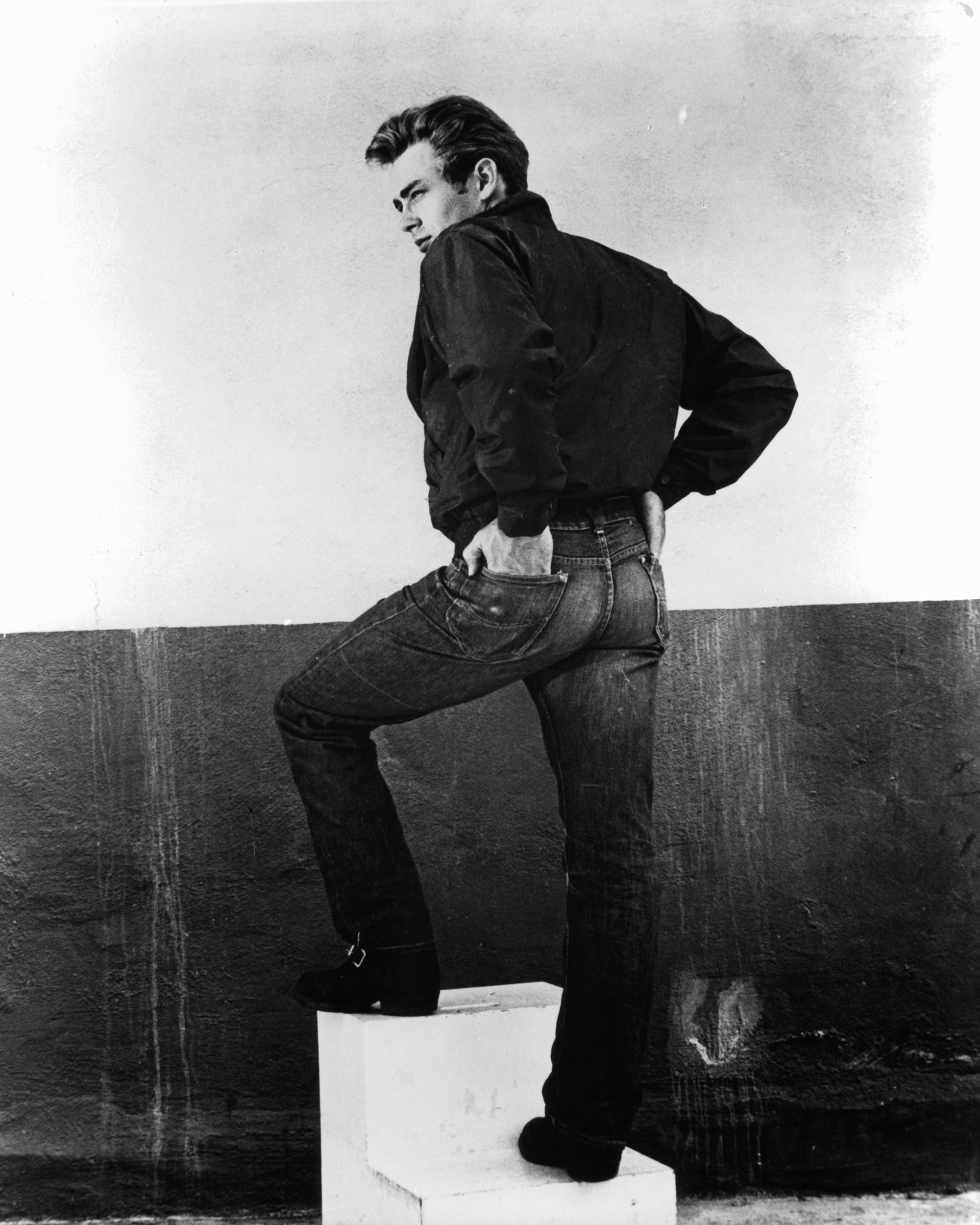
It was during this decade that jeans as a fashion symbol for youth, individualism, new ideas, and rebellion really took hold. The counterculture movement that emerged during the 1960s continued to embrace denim. Jefferson Airplane recorded radio spots for the Levi’s brand, and the Beatles shed their suits in favor of a more relaxed look that included Levi’s. It became popular to decorate your jeans with colorful patches and embroidery, and flares and hip-huggers became styles later in the ’60s and carried over into the ’70s.
Related: The 50 Greatest American Inventions of the Past 50 Years
Jeans in the 1970s
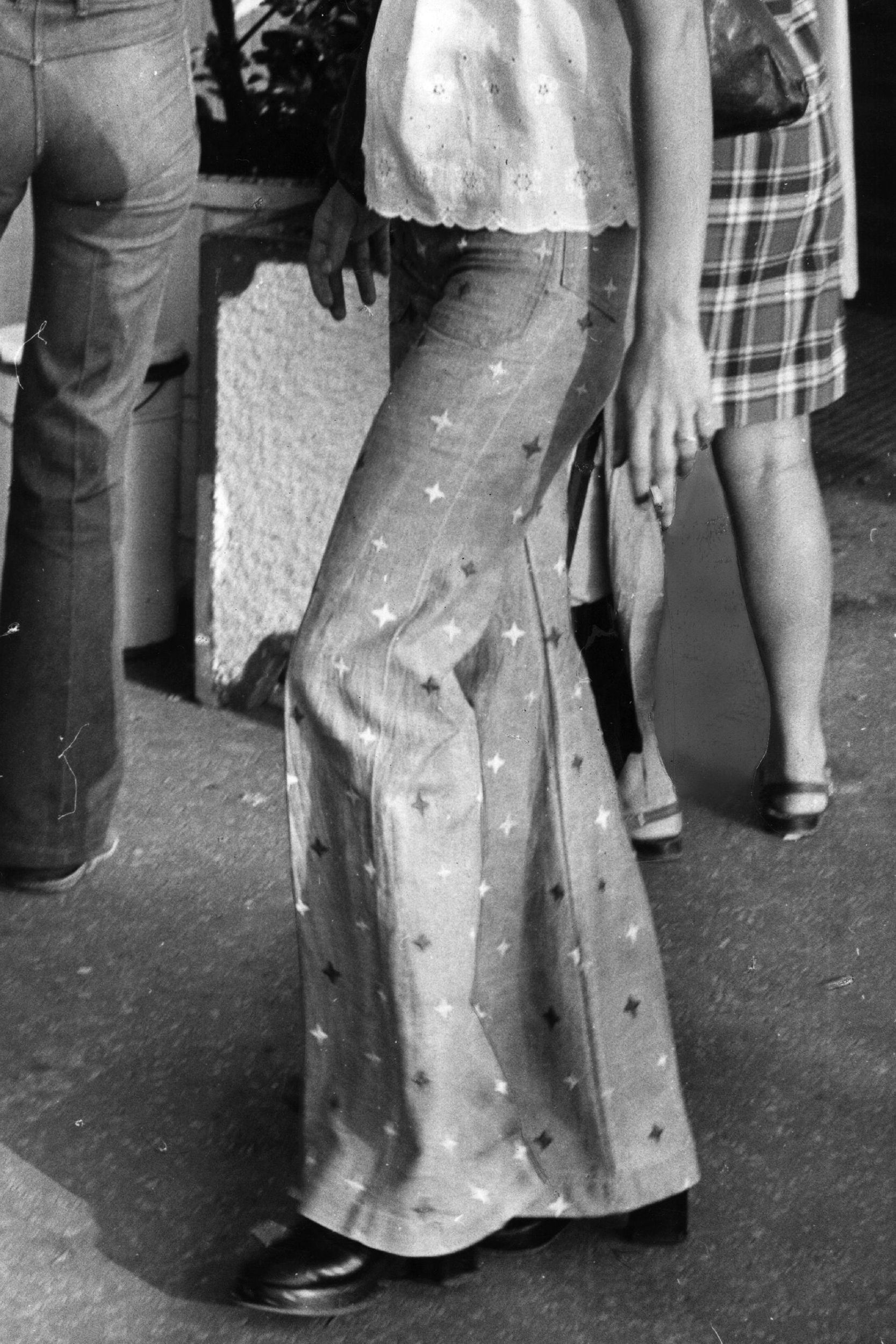
Two words sum up jeans in the ’70s: bell bottoms. The bigger the flare at the ankle, the better. Ripped knees and frays also began to be stylish during this decade, and denim-on-denim was a new trend. Jean jackets and denim skirts also debuted in the 1970s.
Related: 19 Far-Out ’70s Fads That Have Made a Comeback
Sign up for our newsletter
Jeans in the 1980s
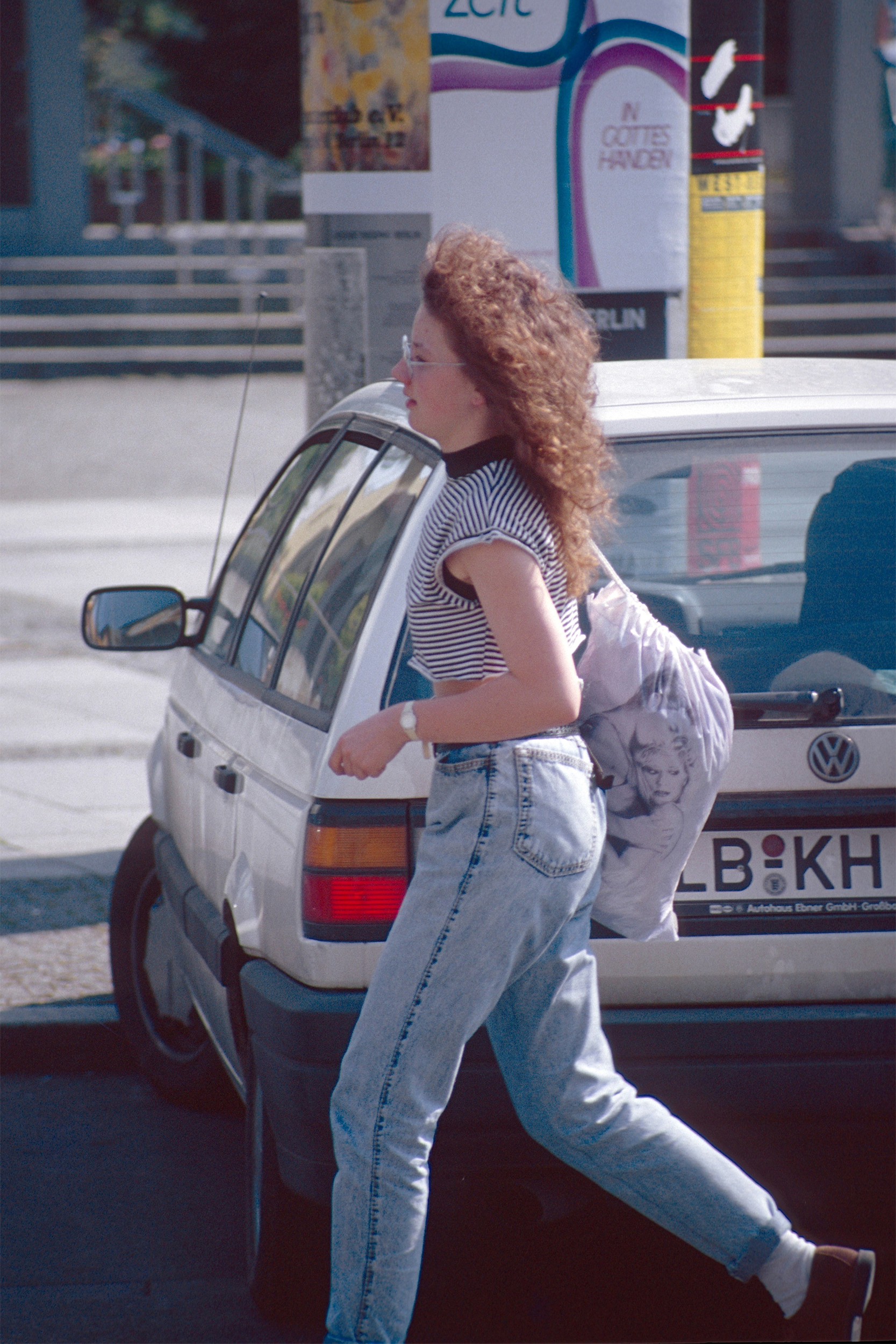
Related: 14 Dead Fashion Brands We Miss
Jeans in the 1990s
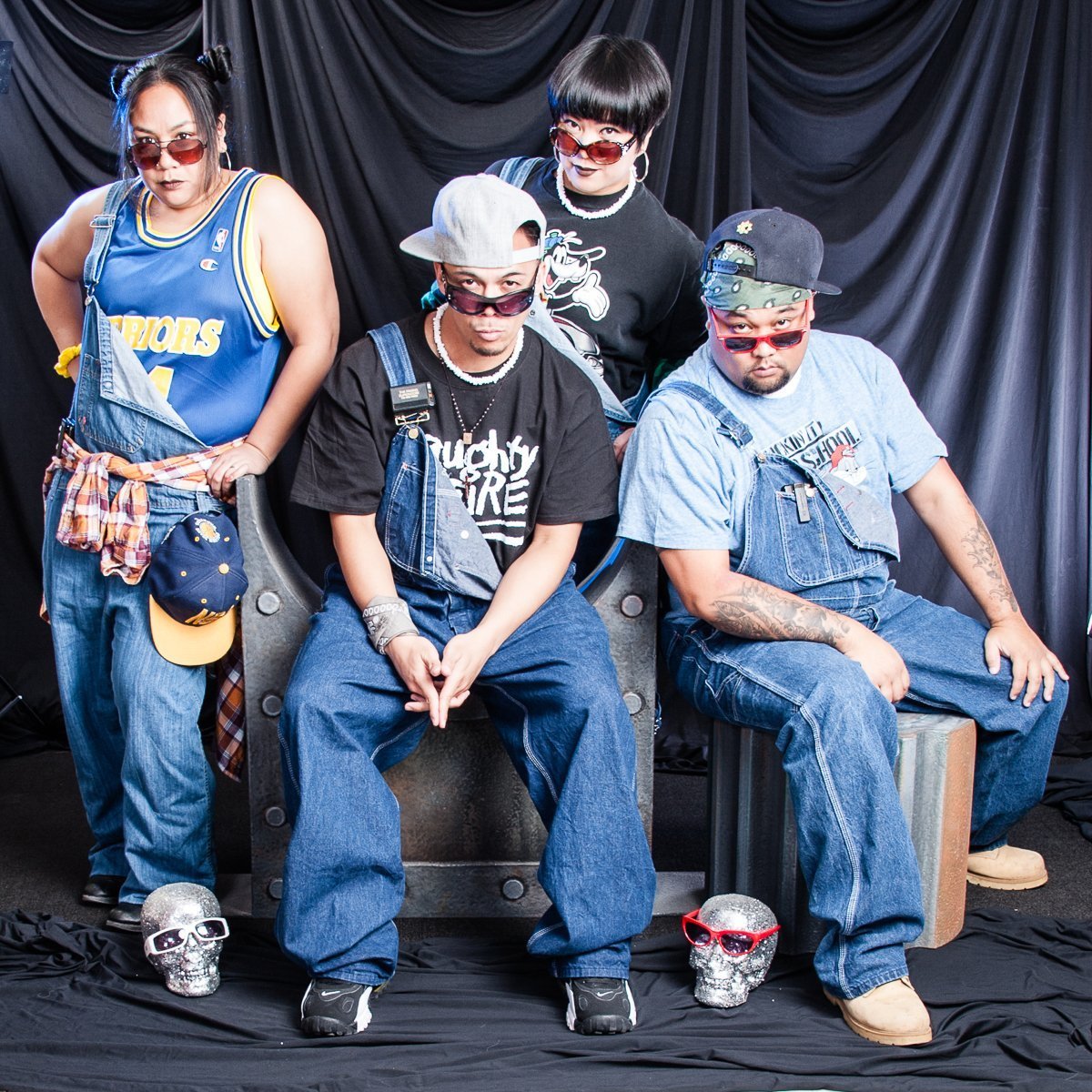
Enter the grunge era. Traces of bright colorful patches and embroidery were mostly gone by this decade, and men were wearing baggy jeans slung low on the hips. Carpenter jeans with pockets and tabs were the rage among both sexes, while women also embraced overalls and shortalls (overalls that were shorts). Head-to-toe denim was also a trend, one that Britney and Justin would carry into the beginning of the next decade.
Related: 51 Best American-Made Products You Can Buy
Jeans in the New Millennia
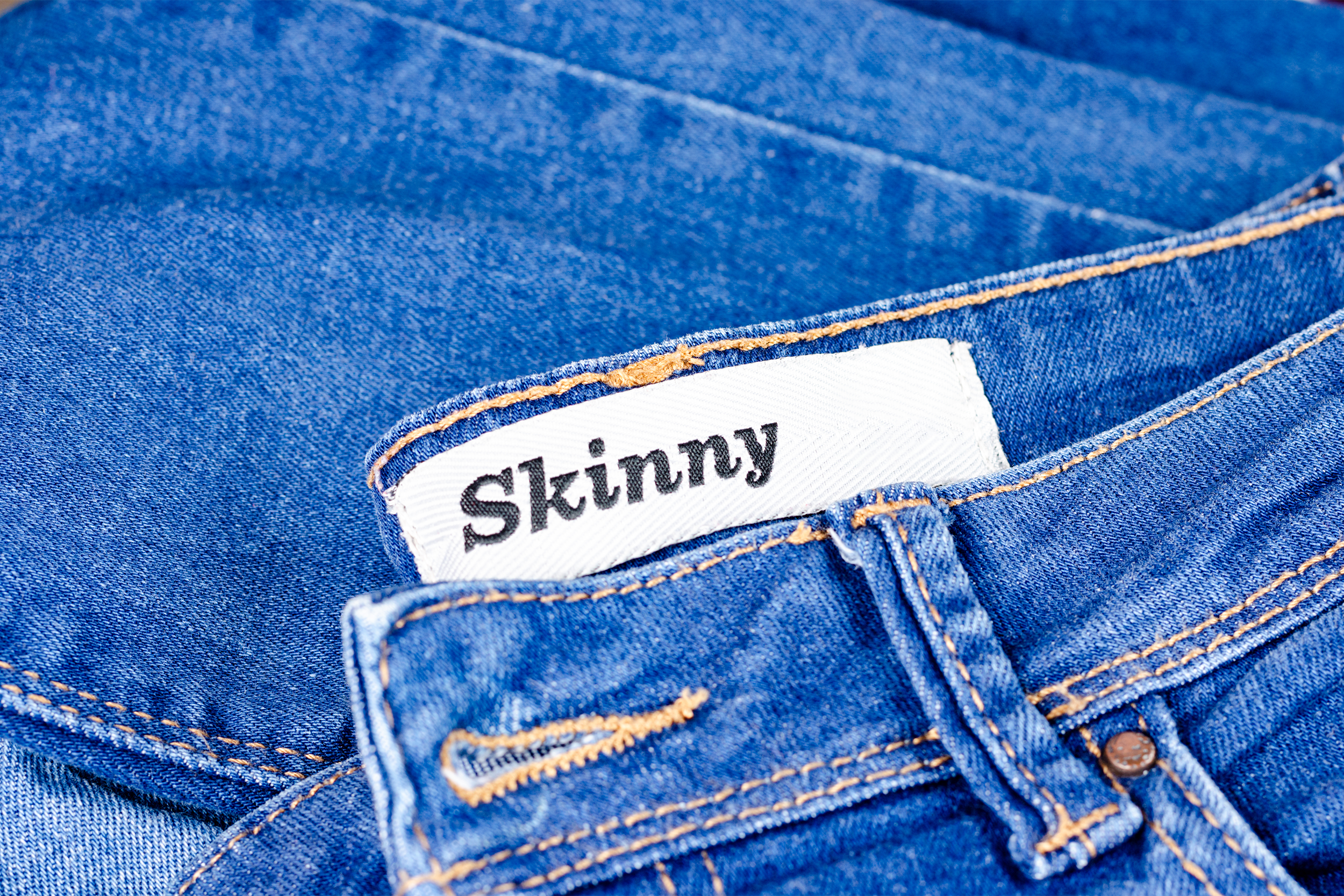
Related: 30 Most Regrettable Fashion Trends in History
Jeans Today
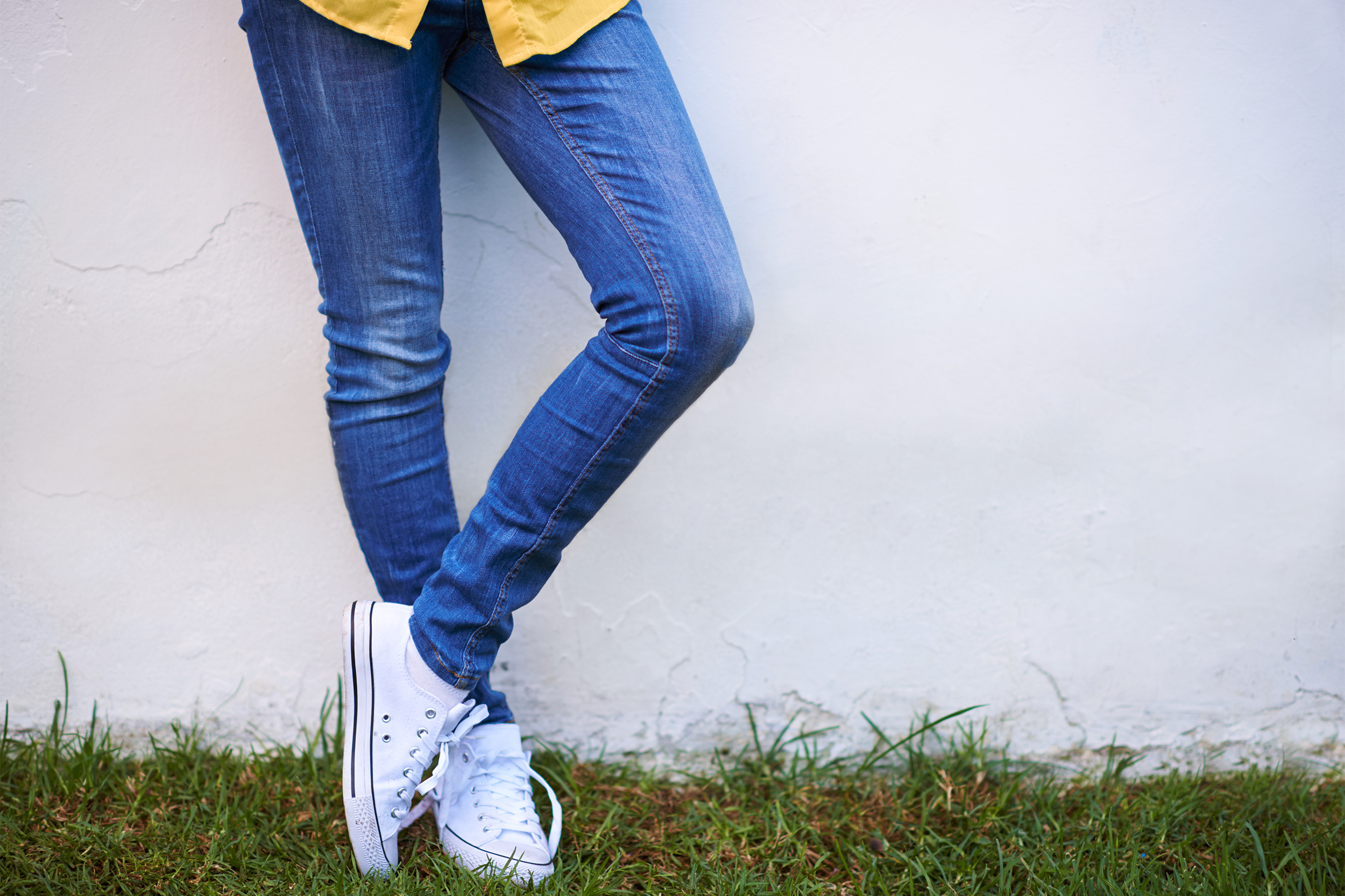
Nowadays, skinny jeans still prevail — although boot cut could be launching a comeback — and some women’s versions are so stretchy that a new term was invented for them: jeggings. A cross between jeans and leggings, this ultra-comfortable new style is now considered appropriate — at least by some — for work and play. Dark or medium washes are considered dressy jeans, while light washes are more casual. Baggy jeans for women are also big for 2021 (no huge surprise given that we’ve all been living in sweatpants for months). Meanwhile, mens’ trends have veered toward the skinny and straight cuts, and jean designers are still using rips and frays to set their styles apart.
